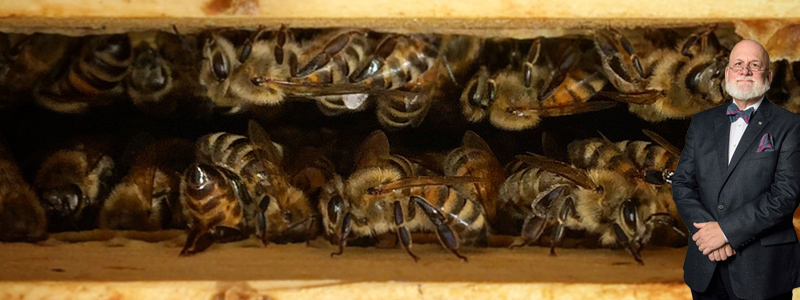What the heck is Bee Venom Therapy? Because we raise bees and harvest honey (Aurora Bee Company) we are often asked about using bees for the treatment (cure) of numerous chronic health conditions; arthritis, multiple sclerosis, fibromyalgia, and so on. Stories and “reports” abound on the internet. Every few months there seems to be an explosion of interest, which has led me to research the topic more deeply. A Google search today yielded 397,000 results in under a half second. The topic is well covered, commonly with anecdotal reports.
On the surface it appears to be straight forward; select a honey bee with tweezers and allow it to sting you. The venom is claimed to trigger a myriad of reactions throughout the body. However, is that the whole story?
The process is actually much more complex and takes a significant amount of time. One zap is rarely enough to accomplish anything.
Persons who choose to undergo this approach are warned to keep an in-date Epi-Pen (epinephrine auto injector) on hand at all times. While the possibility of a serious reaction to honey bee venom is small it is still possible for some individuals, especially ones who already have a challenged immune system.
One recent book on the subject describes a fairly complex set of instructions and states often that the therapy will take two to three years of stinging, accompanied by frequent use of diphenhydramine, ice, Epsom salt baths, high daily doses of vitamin C, extra amounts of magnesium, and suffering through periods of flu-like symptoms (referred to as Herxheimer reactions or just HERX).
It is not just a single sting, but several at various locations on the body. Some stings are near the site of a problem – an arthritic joint, for example. Other locations include spots along the spinal cord. This is not something a person could do themselves without at least one partner. Not only is the process tedious but someone needs to be nearby if the unexpected happens and the Epi-Pen is needed.
Note that the Epi-Pen is expensive and usually bears a short dating. While insurance companies will often cover the cost for people who are known to have a high sensitivity to insect stings, they are less likely to accommodate a person who wants one on hand – every 6 months or so – just in case something unexpected happens with the honey bee stings.
Assuming someone wants to delve into this form of treatment, it would be best if he/she was working with a doctor who is familiar with the condition(s) being treated and the process of using bee stings as a treatment. Additionally, the doctor must be readily available to monitor the process and intervene in the event of serious problems. This would be a rare find in health care today.
Would I be comfortable suggesting bee venom therapy? Would I be able to give advice on how to do it? Would I be willing to sell some of our honey bees to people who want to do it? No, No, and Maybe.
If a reputable doctor in our area wants to do Bee Venom Therapy I’d try to help, but not to the extent where I’d be giving advice or engaging in any sort of direct follow-up. There must be far more solid research on it before I’d be supportive. That’s unlikely to happen in a culture when using honey bees might possibly interfere with the sale of drugs that focus on the individual conditions.

